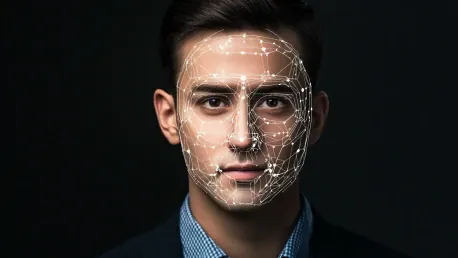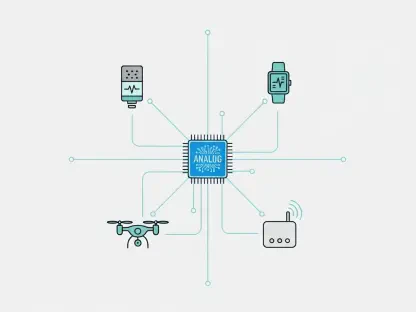Recent research from the Norwegian University of Science and Technology, Mizani, and the Idiap Research Institute has shed light on an unexpected capability of OpenAI’s GPT-4: despite not being explicitly trained in biometrics, GPT-4 demonstrates an impressive proficiency in recognizing faces, determining gender, and estimating age in photos. This finding not only surprises those in the field but also prompts a broader discussion about the inherent capabilities of advanced AI models and their implications.
The investigation into these inadvertent skills reveals both promising applications and potential safety concerns, urging a closer look at large language models’ latent capabilities. Understanding how GPT-4 manages to achieve such high levels of accuracy in tasks it wasn’t specifically designed for is critical for both leveraging its potential and mitigating associated risks.
Gender Recognition Accuracy
GPT-4 vs. Specialized Algorithms
One of the study’s focal points is gender recognition. Remarkably, GPT-4 achieved a 100% accuracy rate on a dataset of 5,400 balanced images. This performance surpasses even DeepFace, a model specifically designed for this task, which scored 99% accuracy. The results suggest that GPT-4, while not inherently crafted for biometrics, can still excel in this domain. Researchers were particularly surprised by this outcome, given that GPT-4’s architecture was primarily designed for language processing rather than image analysis.
The achievement indicates that the vast training data and sophisticated algorithms underpinning GPT-4 can generalize more effectively than anticipated. It opens up new avenues for the use of general language models in specialized applications, but also brings to the forefront important questions regarding the ethical use and potential misuse of such powerful capabilities. The possibility that a language model can outperform specialized algorithms in specific tasks underscores the need for a deeper understanding of what these AI systems can and cannot do.
Implications of High Performance
The high accuracy in gender recognition by GPT-4 introduces significant possibilities. This ability could enhance applications that require gender identification; however, it also opens the door to concerns about misuse. The ease with which GPT-4 can perform these tasks underscores the need for robust ethical guidelines and implementation safeguards. For instance, applications in security, personalized marketing, or social networking platforms could benefit from such capabilities, provided they are used responsibly and ethically.
On the flip side, the potential for misuse also becomes a looming concern. Unauthorized gender identification could lead to scenarios where individuals’ privacy is compromised. Therefore, while the technical achievement is commendable, it necessitates the development of stringent measures to ensure the ethical deployment of such technologies. This dual-edged nature of AI advancement calls for an equally balanced focus on innovation and responsible use.
Underlying Mechanisms
Researchers speculate that the model’s vast training data and its ability to generalize may contribute to its unexpected proficiency. While GPT-4 was designed as a language model, its architecture enables it to interpret visual data effectively, suggesting a broader scope of AI capabilities than initially anticipated. This raises the question of what other latent capabilities might be hidden within such AI models, waiting to be discovered.
The versatility of GPT-4 shows that AI architectures might be more flexible and capable than initially presumed. This flexibility could, in the future, be deliberately harnessed to develop even more powerful and versatile models. However, it also underscores the complexity and unpredictability of these systems. As AI continues to evolve, a more nuanced understanding of these diverse capabilities will be essential for both developers and policymakers.
Age Estimation Capabilities
Performance on the UTKFace Dataset
GPT-4 also showcases strong performance in age estimation. When tested with the UTKFace dataset, it correctly identified the age range approximately 74.25% of the time. This competence highlights GPT-4’s ability to manage complex visual interpretations typically reserved for specialized algorithms. This performance, while not as impeccable as its gender recognition, still underscores a significant milestone for AI not specifically trained in biometrics.
The UTKFace dataset is known for its diversity, encompassing a wide range of ages, ethnicities, and other demographic factors. The fact that GPT-4 could perform so well on this dataset suggests it has a sophisticated understanding of age-related features in images. However, the model’s comparatively lower accuracy in age estimation when compared to gender recognition points to the inherent challenges in this task. Age, unlike gender, is not a binary attribute and can manifest in diverse ways across different individuals.
Nuanced Understanding of Aging
An interesting aspect of GPT-4’s age estimation is its tendency to provide broader age ranges for individuals over 60. This tendency likely reflects the variability in aging among older adults, demonstrating GPT-4’s nuanced understanding of demographic subtleties. Such insights could lead to better user experiences in age-sensitive applications. For example, health tech solutions could benefit from more accurate age-related assessments to tailor medical advice and interventions.
This nuanced understanding of aging could also be useful in applications like age verification for restricted content, personalized advertising, or even in sociological research. However, it also raises ethical issues regarding ageism and privacy. The ability to estimate age accurately could lead to intrusive practices, such as unsolicited targeted advertising based on presumed age or even discriminatory practices. As with gender recognition, the implications of high accuracy in age estimation necessitate careful consideration and rigorous ethical standards.
Broader Applications and Ethical Considerations
The ability to estimate age accurately has numerous applications in security, health tech, and personalization of user experiences. However, accurate age estimation also raises privacy issues, as misuse of such information could lead to intrusive surveillance and age discrimination. Just as with any powerful technology, the benefits must be weighed against the potential for harm. For instance, while security applications might use age estimation to enhance safety protocols, this same technology could be misused for monitoring or surveillance without consent.
Given these concerns, the adoption of robust data privacy laws and ethical guidelines becomes paramount. Developers must ensure that their AI systems are designed and implemented to respect individual privacy and autonomy. Users, on their part, should be informed and empowered to control how their data is used. This dual responsibility underscores the need for a collaborative approach involving technology developers, policymakers, and the general public.
Safety Concerns and Bypassing Safeguards
Critical Safety Issues Uncovered
A significant revelation from the study is the ease with which GPT-4’s built-in safeguards can be bypassed. Researchers found that by simply stating in the prompt that an image was AI-generated, they could trick GPT-4 into analyzing real photos. This loophole underscores the inadequacy of current safety measures within AI models. It raises the alarming possibility that sensitive biometric data could be accessed and misused with minimal effort.
The ability to bypass built-in safeguards so easily highlights a critical vulnerability in AI systems. These models are often perceived as being inherently secure, but this study demonstrates otherwise. The potential for misuse extends beyond mere academic concern and into real-world scenarios where individuals’ biometric data could be exploited. This revelation calls for immediate action to shore up the defenses within these AI systems, making them more resilient against such manipulative tactics.
Necessity for Robust Safeguards
The researchers’ ability to bypass safeguards indicates a critical need for more resilient security features. In applications where sensitive biometric data is at stake, it’s imperative to ensure that AI systems cannot be easily manipulated. More stringent verification processes and advanced detection mechanisms are needed to prevent potential misuse. This involves not only technical enhancements but also a reevaluation of existing security protocols.
Developers must prioritize the integration of robust safeguard mechanisms that go beyond superficial checks. One approach could be multi-layered security measures that are difficult to override. Additionally, continuous monitoring and updating of these systems can help in quickly identifying and rectifying potential vulnerabilities. This proactive stance is essential to maintain the integrity and trustworthiness of AI models, especially when handling sensitive and personal data.
Ethical Implications and Future Directions
The study’s findings urge the AI community to consider ethical implications more seriously. Developers and users alike must recognize the power and limitations of AI models, striving always to uphold privacy and security. As AI technology continues to evolve, ongoing research and development of ethical standards must keep pace. The balance between innovation and ethical responsibility should guide all AI-related activities, ensuring that advancements benefit society without compromising individuals’ rights.
Future research should focus on creating AI systems that are not only powerful but also ethically sound. This involves interdisciplinary collaboration among technologists, ethicists, and policymakers to develop comprehensive frameworks that govern the responsible use of AI. The goal should be to create a robust ecosystem where AI can thrive and contribute positively to various domains while safeguarding against potential abuses.
Emerging Versatility of Large Language Models
Integration of Biometric Functions
The study illustrates an overarching trend: the evolving versatility of large language models like GPT-4. These models are proving capable of tasks far beyond their initial design purposes, signifying a new era in AI capabilities. This integration of unexpected functions into general models enhances their applicability across diverse domains. The surprising proficiency of GPT-4 in biometric tasks underscores the broader potential of AI systems to adapt to a variety of applications.
The seamless integration of such diverse capabilities into a single model opens up numerous possibilities for future AI applications. From enhancing user interactions in consumer devices to contributing to advancements in healthcare and security, the potential uses are expansive. However, this versatility also demands a comprehensive understanding of the ethical implications and potential risks, ensuring that the benefits outweigh the drawbacks.
Balancing Innovation and Ethics
While advances in AI bring about innovative solutions and improve technological functionalities, they also necessitate a balanced approach that prioritizes ethical considerations. Ensuring that the development and deployment of AI are aligned with strict ethical standards is crucial in maximizing benefits while mitigating risks. This balanced approach requires ongoing dialogue among stakeholders, including developers, policymakers, and the public, to address concerns and establish responsible practices.
As AI continues to evolve, the focus should be on creating frameworks that support innovation while safeguarding against potential harms. This involves setting clear ethical guidelines, implementing robust security measures, and fostering a culture of responsibility and accountability in AI development. By doing so, the AI community can ensure that technological advancements contribute positively to society, enhancing daily lives while respecting individual rights and security.
The Path Forward
One of the study’s main focuses is gender recognition. Impressively, GPT-4 achieved a perfect 100% accuracy rate on a dataset of 5,400 balanced images. This performance even surpasses DeepFace, a model specifically created for this task, which achieved 99% accuracy. These results indicate that GPT-4, although not explicitly designed for biometrics, can still excel in this field. Researchers were particularly surprised by these findings, given that GPT-4’s architecture is primarily intended for language processing rather than image analysis.
This achievement suggests that the extensive training data and advanced algorithms behind GPT-4 allow it to generalize more effectively than initially expected. It opens up new possibilities for the application of general language models in specialized areas. However, it also raises significant ethical questions about the use and potential misuse of such powerful capabilities. The fact that a language model can outperform specialized algorithms in certain tasks highlights the necessity of gaining a deeper understanding of the capabilities and limitations of these AI systems.









